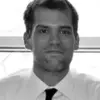European experts release guidelines about high-altitude exposure for cardiovascular patients
A group of prominent European medical societies published clinical recommendations for those with pre-existing cardiovascular conditions at high altitude.
The document was published Jan. 11 in the European Heart Journal as a joint statement from the European Society of Cardiology (ESC), the ESC’s Council on Hypertension, the European Society of Hypertension, the International Society of Mountain Medicine, the Italian Society of Hypertension and the Italian Society of Mountain Medicine.
The researchers—led by Gianfranco Parati, a cardiologist of the University of Milano-Bicocca in Milan—released detailed guidelines for patients who have hypertension, coronary heart disease or recent heart attack. The recommendations define anything over 2,500 meters (8,202 feet) as high altitude.
"But these patients don't have to rule out a hike in the mountains completely, except in the case of very serious heart diseases," said Hermann Brugger, president of the International Society for Mountain Medicine. "There are still lots of activities they can do, provided they follow the relevant guidelines, and in the best-case scenario, this activity could even lead to a general improvement in their health."
The researchers included comprehensive recommendations for patients of severity levels of conditions. Sample suggestions include:
- All heart failure patients should slowly ascend, advancing no more than 300 to 500 m per day when above 2,500 m.
- Patients should wait at least six to 12 months after coronary stenting before traveling to high altitudes.
- Those at moderate risk for coronary artery disease may ascend to 2,500 m, but exercise beyond light is contraindicated.
- Individuals with well-controlled hypertensive symptoms may reach up to 4,000 m with adequate medical therapy.
For the team’s complete recommendations, visit the European Heart Journal.
